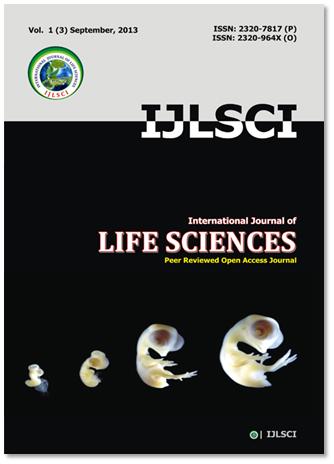Use of participatory method in preparation of inventory of economically and medicinally important plants
Keywords:
Participatory Methods, Inventory, Traditional Knowledge, Medicinally Important Plants, Economically Important PlantsAbstract
Participatory methods are currently used in different research areas, especially for rapid diagnosis of the needs of the local people involved in the study. Thus, these methods were used in Made Tukum block of Kharpundi village of central India. An Inventory of economically and medicinally important plants was prepared. The need for present work is to know the useful flora of the area and to maintain a record of traditional knowledge of local people. These plant species were photographed, with an emphasis on some phenological characters. Workshop was carried out for local people. On this occasion we presented names and pictures of plants, the residents discussed their economical and medicinal values. Data available from field visits, actual observations and interactions is compiled in tabulated form. People were made aware with utility of these plants & need of conservation of these plants through workshop. The compilation of this information was a way of valuing and recording the local knowledge of medicinally and economically important plants.
Downloads
References
1. Albuquerque UP, Lucena RFP, Alencar NL (2010) Metodos e tecnicas para a coleta de dados. In Métodos e técnicas na pesquisa etnobotânica. Edited by Albuquerque UP, Lucena RFP, Cunha LVFC. Recife: Editora NUPEEA, 483-497.
2. Araujo EL, Castro CC, Albuquerque UP (2007) Dytamrcs of Brazilian Caatinga -A review concerning the plants, environment and people. Functional Ecosystems and Communities, 1: 15-28
3. Cooke T, 1967 (Rpr.) The Flora of Presidency of Bombay.Vol. II. Botanical Survey of India. Calcutta.
4. Cunningham AB, (1993) African Medicinal Plants: Setting Priorities at the Interface between Conservation and Primary Healthcare, People and Plants Working People Paper, l : l-50
5. Hooker JD, 1872-1977. The flora of British India. Vol. I – VII. London.
6. Kuperus G 1998 "Discussion paper: The desirability and feasibility of stakeholder participation in planning, monitoring and evaluation within MSF-Holland" MSF-Holland
7. Naik VN (1998) Flora of Marathwada. Vol. I & II, Amurt Prakashan, Aurangabad.
8. Parrotta John A (2001) Healing Plants of Peninsular India.CABI Publishing USA.
9. Sampaio EVSB (1995) Ovcrview of the Brazilian Caatinga.ln: Bullock S, Mooney HA, Medina E (Eds) Seasonally Dry Tropical Forest, Cambridge University Press, New York, 35-58.
10. Sampaio EVSB (2002) Uso das plantas da Caatinga. In: Sampaio EVSB, Giuietti AM, Virginio J, Gamarra-Rojas CFL (Eds) Vegetacdo e Flora da Caatinga, APNE/CNIP, Associacao de Plantas do Nordeste, Rccife, 49-90.
11. Sieber SS, Albuquerque UP (2010) Metodos participativos na pesquisa etonobiologica. In. Albuquerque UP, Lucena RFP, Cunha LVFC (Eds) Metodos e Tcnicas na Pesquisa Etnobiologica (l, Estudos & Avancos), NUPEEA, Recife, 85-106
12. Sieber SS, Medeiros PM, Albuquerque UP (2010) Local perception of environmental change in a semi-arid area of northeast Brazil: a new approach for the use of participatory methods at the level of family units. Journal of Agricultural and Environmental Ethics in press.
13. Siliprandi E (2002) Desafiospara a extensao rural: O "social" na transicao agroecologica. Agroecologia e Desenvolvimento Rural Sustentavel, 3 :38-48
14. Singh NP and Karthikeyan S 2000: Flora of Maharashtra state Vol. 1-3. Botanical Survey of India. Calcutta.
15. Yadav SR and Sardesai MM (2002) Flora of Kolhapur District. Shivaji University Press, Kolhapur.
Downloads
Published
How to Cite
Issue
Section
License
Copyright (c) 2013 Authors

This work is licensed under a Creative Commons Attribution-NonCommercial-NoDerivatives 4.0 International License.
Open Access This article is licensed under a Creative Commons Attribution 4.0 International License, which permits use, sharing, adaptation, distribution and reproduction in any medium or format, as long as you give appropriate credit to the original author(s) and the source, provide a link to the Creative Commons license, and indicate if changes were made. The images or other third party material in this article are included in the article’s Creative Commons license unless indicated otherwise in a credit line to the material. If the material is not included in the article’s Creative Commons license and your intended use is not permitted by statutory regulation or exceeds the permitted use, you will need to obtain permission directly from the copyright holder. To view a copy of this license, visit http://creativecommons.org/ licenses/by/4.0/











